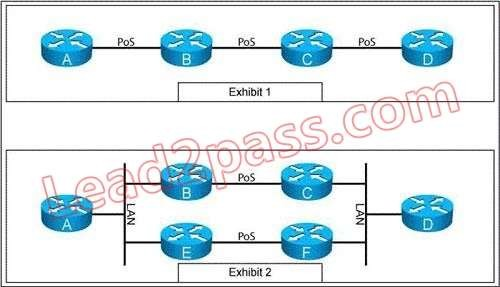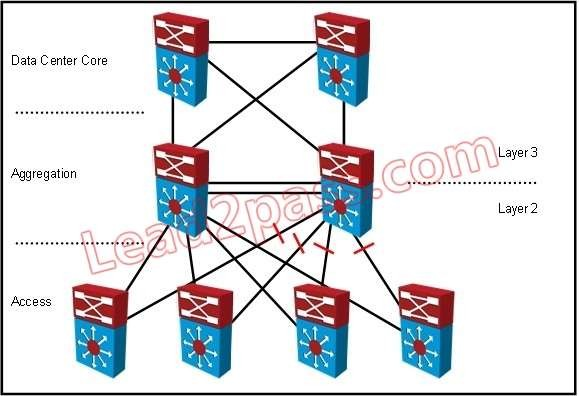Cisco® 352-001 Exam Practice Questions (P. 2)
- Full Access (253 questions)
- Six months of Premium Access
- Access to one million comments
- Seamless ChatGPT Integration
- Ability to download PDF files
- Anki Flashcard files for revision
- No Captcha & No AdSense
- Advanced Exam Configuration
Question #6
You are deploying OSPF on a point-to-multipoint Frame Relay network. The remote sites do not need to be able to communicate with each other and there are a relatively small number of sites (scaling is not a concern).
How should you configure OSPF for this topology to minimize the additional routing information injected into the network and keep the configuration size and complexity to a minimum?
How should you configure OSPF for this topology to minimize the additional routing information injected into the network and keep the configuration size and complexity to a minimum?
- AConfigure the link at the hub router as OSPF point-to-multipoint and at the remote routers as OSPF point-to-point.
- BConfigure the link as OSPF broadcast and configure the hub router to always be the designated router.
- CConfigure the link as OSPF nonbroadcast and manually configure each of the remote sites as a neighbor.
- DConfigure the link as OSPF broadcast and configure a mesh group towards the remote routers.
Correct Answer:
B
B
send
light_mode
delete
Question #7
Which two practices should you implement to increase SNMPv1 security? (Choose two.)
- ARestrict access to the specific SNMP engine IDs in use.
- BUse ACLs to allow only specific IP addresses to poll SNMP.
- CUse a combination of alphanumeric characters for the community strings.
- DUse SNMP encryption for transport confidentiality.
Correct Answer:
BC
BC
send
light_mode
delete
Question #8
Refer to the exhibits. You have been asked to review a proposal for adding redundancy to the non-redundant network in Exhibit 1. Exhibit 2 shows the proposed redundant network. Which technology would provide faster convergence over the newly introduced layer 2 domains?


- ABi-directional Forwarding Detection
- BRapid Spanning Tree
- CUnidirectional Link Detection
- DHot Standby Router Protocol
Correct Answer:
A
A
send
light_mode
delete
Question #9
A service provider has a Resilient Ethernet Protocol ring running as a metro backbone between its locations in one city. A customer wants to connect one site with one box redundant to the Resilient Ethernet Protocol ring at two different service provider locations. How can this be done without producing any Layer 2 loops within the network design?
- ASpanning tree at the service provider side only must be enabled.
- BSpanning tree at the customer side only must be enabled.
- CFlex Links at the service provider side only must be enabled.
- DFlex Links at the customer side only must be enabled.
- EEtherChannel at the service provider side and the customer side must be enabled.
- FSpanning tree at the service provider side and the customer side must be enabled.
- GFlex Links at the service provider side and the customer side must be enabled.
Correct Answer:
D
D
send
light_mode
delete
Question #10
Refer to the exhibit. Your company designed a network to allow server VLANs in a data center to span all access switches. In the design, Layer 3 VLAN interfaces and HSRP are configured on the aggregation switches. In which three ways should the design of the STP domain be optimized for server and application performance? (Choose three.)


- AUse loop guard on access ports.
- BUse PortFast on access ports.
- CUse root guard on access ports.
- DAlign Layer 2 and Layer 3 forwarding paths.
- EUse BPDU Skew Detection on access ports.
- FExplicitly determine root and backup root bridges.
Correct Answer:
BDF
BDF
send
light_mode
delete
All Pages
